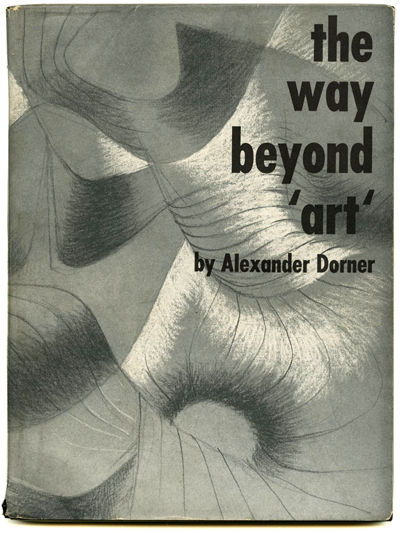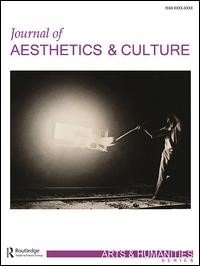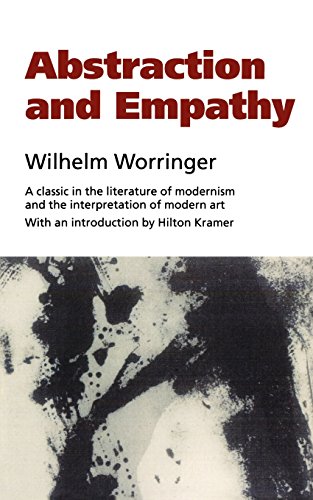Alexander Dorner: The Way Beyond ‘Art’ (1947/1958)
Filed under book | Tags: · art criticism, art theory, modernism

A book by Alexander Dorner, a progressive museum director affiliated with interwar avant-garde, dealing with the tensions and genesis of modern art.
First edition published by Wittenborn & Schultz, New York, 1947
Revised edition
Introduction by John Dewey
Introduction to the revised edition by Charles L. Kuhn
Publisher New York University Press, New York, 1958
154 pages
Reviews: Vincent Tomas (J Aesthetics and Art Criticism, 1948), George Boas (Art Bulletin, 1947).
Commentary: Samuel Cauman (College Art J, 1948), Rebecca K. Uchill (2015).
PDF (19 MB)
Comment (0)Journal of Aesthetics & Culture, 4: From Sign to Signal (2012)
Filed under book | Tags: · aesthetics, art theory, electronic art, film, interface, media, media art, media technology, new media, semiotics, sign, signal processing, technology, theory

“Since the 1990s there has been intensified focus on the concepts of performativity, the relational, and affect in the humanities. Scholars from different fields have in a variety of ways embraced these notions in their accounts of contemporary culture, and as such they also form the backdrop of this thematic collection of articles entitled From Sign to Signal. It seems, however, as if today’s media situation–the globally evident usage of media technologies–requires a new theoretical approach in order to deal with the intersections of technology and aesthetics, since in these cases the sign often falls short. It has therefore been the ambition of this collection to invite scholars within the humanities to take part in a discussion on the implications of a gradual shift from a (linguistically framed) paradigm of the sign to a new paradigm connected with media augmented environments.
As the term for this new paradigm we have chosen the ‘signaletic material’, coined by Gilles Deleuze in his book Cinema 2: The Time-Image. Deleuze developed this notion in order to stress that film in his view of contemporary or modern cinema had altogether eliminated classical (literary) thoughts of plot and narration. Toward the end of Cinema 2 it becomes clear that the notion of the ‘signaletic material’ might be developed to cover all kinds of filmic and electronic material as well as the emerging new media technologies.” (from Foreword)
Edited by Bodil Marie Stavning Thomsen, John Sundholm and Ulla Angkjær Jørgensen
Publisher Co-Action Publishing, Järfälla, Sweden, 2012
Creative Commons CC-BY 4.0 License
eISSN 2000-4214
134 pages
HTML, PDFs (updated on 2017-10-27)
single PDF
Wilhelm Worringer: Abstraction and Empathy: A Contribution to the Psychology of Style (1907–)
Filed under book | Tags: · aesthetics, art, art history, art theory

“In this text, Worringer identifies two opposing tendencies pervading the history of art from ancient times through the Enlightenment. He claims that in societies experiencing periods of anxiety and intense spirituality, such as those of ancient Egypt and the Middle Ages, artistic production tends toward a flat, crystalline ‘abstraction’, while cultures that are oriented toward science and the physical world, like ancient Greece and Renaissance Italy, are dominated by more naturalistic, embodied styles, which he grouped under the term ’empathy’. As was traditional for art history at the time, Worringer’s book remained firmly engaged with the past, ignoring contemporaneous artistic production. Yet in the wake of its publication, Abstraction and Empathy came to be seen as fundamental for understanding the rise of Expressionism and the role of abstraction in the early twentieth century.”
First published as author’s dissertation entitled Abstraktion und Einfühlung, Heuser, Neuwied, 1907.
English edition
Translated by Michael Bullock
Publisher International University Press, New York, 1953
New edition with an Introduction by Hilton Kramer published by Ivan R. Dee, Chicago, 1997
ISBN 1566631777, 9781566631778
144 pages
WorldCat (EN)
Abstraktion und Einfühlung (German, 1907, further editions: 3rd, 1911, 11th, 1921)
Abstraction and Empathy (English, 1953/1997, 9 MB)

